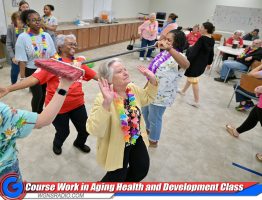Heart disease strikes someone in the U.S. about once every 34 seconds and claims more lives than all forms of cancer combined. While men are struck with heart disease at a generally younger age, women have a greater risk of death. Robert Rickman talks about matters of the heart:
VERBATIM:
In honor of American Heart Month, TriStar StoneCrest Medical Center is helping raise awareness about heart disease and heart health throughout February.
At TriStar Nelson Mangione, a cardiologist, says “The most powerful tool in preventing heart disease is knowing your personal risk of heart disease and steps you can take to prevent heart disease. You should talk with your healthcare provider about personal risk. And this should happen during every stage of life – not just with older adults.”
Says Dr. Mangione. “Everyone must also pay attention to any signs or symptoms of heart disease. Early detection and treatment of heart disease and seeking emergency care quickly at the first sign of a heart attack can be the difference between life and death.”
According to cardiovascular prevention guidelines published by the American Heart Association in November 2013, there are four main components that individuals and healthcare providers should focus on for the best prevention and treatment of heart disease: assessment of risk, obesity, cholesterol and lifestyle. Robert Rickman, WGNS news.
Community members can learn more about heart health during the events listed below or online at TriStarStoneCrest.com and Heart.org.
Beginning this month, residents may also take a FREE online heart risk assessment tool to learn more about their personal risk of heart disease. By answering a few quick questions, participants immediately receive a digital report with information that allows them to compare their actual age to their heart’s biological age; estimate their risk of developing heart disease over the next 10-30 years; and prioritize their most harmful cardiovascular risk factors. To take the heart risk assessment, simply visit TriStarHealth.com/myheartrisk.
Heart Health Community Events
Feb. 5: AngioScreen will be available in the TriStar StoneCrest classroom from 8a.m.-4p.m.
In less than 10 minutes, participants can learn their risk of heart attack and stroke with a simple ultrasound screening. Cost is $50. Appointments are required. Register at TriStarHealth.com/events or call 615-342-1919.
Feb. 7: We’re going Red on campus! Join the national movement and GoRed, too. Wear your red all day and tell others why you GoRed. Show off your Red by posting a #GoRed photo on our Facebook page (facebook.com/StoneCrestMedicalCenter). Together our community can help raise awareness about women’s risk of heart disease.
Feb. 10: Heart Disease Presentation at The North Rutherford Y from 8a.m.-9a.m. This free community presentation with a TriStar StoneCrest cardiologist will cover risk, prevention and recognizing symptoms of heart disease. A personal trainer from The Y will discuss everyday fitness tips for heart health. Free blood pressure checks will be available.
Feb. 11: Heart Healthy Cooking Demonstration at The North Rutherford Y from 11:30a.m.-12:30p.m. This free community event will include a live cooking demonstration and discussion with a registered dietician from TriStar StoneCrest. Participants will learn how a person’s diet can prevent or raise risk for heart disease. Free blood pressure checks will be available. Registration is requested.
Did You Know:
- 90% of women have one or more risk factors for developing heart disease.
- Cardiovascular diseases cause one in three women's deaths each year, killing approximately one woman every minute.
- Women are less likely to call 9-1-1 when they are having symptoms of a heart attack.
- Heart disease kills more women than all forms of cancer combined, but is often undiagnosed.
- Awareness has helped save more than 627,000 women from heart disease, and 330 fewer are dying per day.











